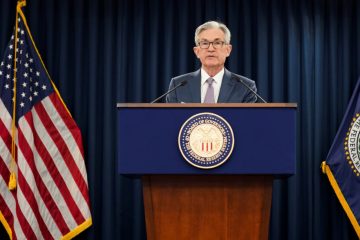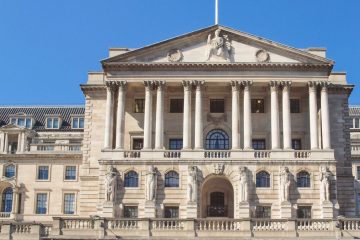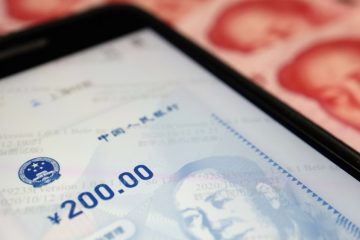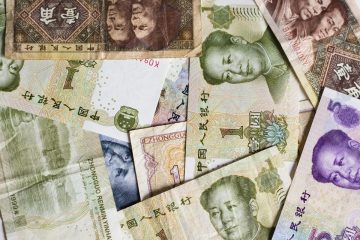Days of ultralow interest rates are over

The era of extremely cheap interest rates has come to an end.
Amidst the ongoing debate regarding the timing and necessity of interest rate decreases by the Federal Reserve, another significant discussion is taking place: what will be the ultimate level at which the rates stabilize in the future?
The focal point of concern is the neutral rate of interest, which refers to the rate that maintains a balance between the demand and supply of savings, hence promoting steady economic growth and inflation.
Over the past four decades, and particularly after the 2008 financial crisis, economists and policymakers at the Federal Reserve consistently lowered their projections for the neutral level. This perspective became deeply ingrained in bond yields, mortgage rates, equities prices, and numerous other financial assets.
However, there are now some indications of a neutral upward trend, which could have the capacity to impact a broad spectrum of asset values.
The neutral rate, often known as “r*” or “r-star,” cannot be directly observed but may only be inferred. Five years ago, following the Federal Reserve’s decision to increase its benchmark federal-funds rate to 2.4%, policymakers observed indications of weak economic expansion and inflation. Consequently, they initiated a series of interest rate reductions, suggesting that the neutral rate must have been about at that level or even lower.
However, when the Federal Reserve increased the federal funds rates to 5.3% last year, the highest level seen since 2001, the economy seemed unaffected by it, leading to the belief that the neutral rate might be higher. “The economy has endured this situation remarkably well.” “Ten years ago, nobody could have predicted that we would increase rates to this extent and achieve this particular result,” stated Joe Davis, the chief global economist of Vanguard. “Our confidence in a higher neutral rate is increasing with each quarter of data.”
Is the level of neutrality higher, or is it simply a case of lag? The continuation of robust demand does not necessarily indicate an increase in neutrality; it could simply reflect that higher interest rates have not yet fully permeated the banking system. Households and businesses, who have secured their loans at low interest rates, may be somewhat protected from the current increase in rates.
Given the ability of economic activity to withstand increased interest rates, one could infer that the natural rate of interest (r-star) must be greater. “An alternative inference that can be made, which I believe is entirely reasonable given the identical data, is that the economy is not significantly influenced by changes in interest rates,” stated Kris Dawsey, the head of economic research at hedge-fund manager D.E. Shaw.
In order to accurately model the impact of interest rates, it is necessary to have an estimation of the neutral rate as well as an understanding of the responsiveness of spending to rate fluctuations and the time delay between expenditure and changes in prices.
According to Jason Thomas, the chief economist at Carlyle Group, it is challenging to ensure accuracy in multiple areas because mistakes in one area might be readily confused with incorrect projections in other areas.
On a quarterly basis, officials from the Federal Reserve predict the long-term interest rate, which essentially represents their estimation of the neutral rate. Their median forecast decreased from 4.25% in 2012 to 2.5% in 2019. By deducting a 2% inflation rate, the result was a real neutral rate of 0.5%.
In March, the median increased to 0.6%, however this figure does not fully reflect the extent of the changes in those estimations. In March, 50% of the officials, specifically nine out of 18, expressed a neutral opinion that exceeded 0.5%. Only two years prior, exactly two individuals did. Cleveland Federal Reserve President Loretta Mester recently adjusted her long-term interest rate estimate from 2.5% to 3%, after maintaining the former figure for several years.
The ramifications for the Federal Reserve. The discussion surrounding r-star is unlikely to have an immediate impact on the Federal Reserve as the present interest rates are higher than most estimates of the neutral rate. This indicates that they are impeding the expansion and causing prices to decrease, making it more probable for them to decline rather than increase. If economic expansion continues at a steady pace and inflation is persistent, it could result in an increase in speculation that the neutral interest rate has risen, indicating that present interest rates are not too restrictive. Consequently, the Federal Reserve has a diminished incentive to reduce interest rates.
If inflation continues to decrease, the extent to which the Fed decreases rates will depend on the concept of neutral.
The Federal Reserve aims to “normalize policy,” but the question is, what exactly does it mean to “normalize”? According to David Mericle, the head U.S. economist at Goldman Sachs,… “Although they will not remain at the level of 5s, the process of normalization will not lead them to reach 2.5%.” The specific point at which they feel comfortable halting, whether it be in the 3s or 4s, is still uncertain.
There are other reasons given for the potential increase in neutrality: escalating government deficits, robust investment supported by the shift towards green energy, and a surge in demand for electricity-intensive data centers driven by artificial intelligence. Increased productivity resulting from artificial intelligence (AI) has the potential to boost long-term economic growth and the neutral interest rate.
In a recent lecture, Lorie Logan, President of the Dallas Federal Reserve, cautioned that interest rates might not be as constraining as previously thought due to an elevated neutral rate. According to her, not acknowledging a continuous increase in the neutral rate could result in excessively supportive monetary policy.
Investors have already determined that interest rates are unlikely to revert to the low levels that existed prior to the outbreak. Based on interest-rate futures, it is predicted that the fed-funds rate will remain steady at approximately 4% in the upcoming years.
Some people are doubtful that neutrality is increasing. John Williams, the President of the Federal Reserve Bank of New York and co-author of a highly influential model of the natural rate of interest (r-star), has stated that he anticipates a global workforce that is getting older and saving more, which will likely keep the neutral interest rate at a low level.
Federal Reserve Chair Jerome Powell, along with some colleagues, have proposed that the robustness of the economy should be equally attributed to peculiarities of the pandemic, such as the influx of labor due to immigration last year. The policy is both restrictive and unresponsive to rates. “We are currently experiencing a temporary impact from an external force,” Powell stated at a recent discussion.
Federal Reserve governor Christopher Waller has expressed his belief that the natural rate of interest, commonly referred to as r-star, is approximately 0.5%. Last month, he requested an explanation for the 40-year decline in real rates on secure and easily convertible government debt, as well as the sudden reversal of this trend. “No satisfactory responses have been provided thus far.”
Multiple economic models aim to estimate neutrality, however they exhibit significant margin of error and are susceptible to adjustment.
Considering the lack of accuracy, Powell has suggested that the Federal Reserve should take action based on the presumption that it is uncertain about the exact position of r-star. “Last year, he stated that our knowledge of it is solely based on its accomplishments.”









